Aura: Difference between revisions
| Line 27: | Line 27: | ||
In the aura now the most different color tones flood. And this flooding is a true picture of the inner human life. Individual color tones are as changing as this. But certain permanent qualities: talents, habits, character traits are also expressed in permanent basic color tones.|9|158|72}} | In the aura now the most different color tones flood. And this flooding is a true picture of the inner human life. Individual color tones are as changing as this. But certain permanent qualities: talents, habits, character traits are also expressed in permanent basic color tones.|9|158|72}} | ||
[[File:Astral Body of the Average Man.jpg|thumb|The astral aura of the averagely developed man, according to C. W. Leadbeater, Man Visible and Invisible, 1902.]] | [[File:Astral Body of the Average Man.jpg|thumb|150px|The astral aura of the averagely developed man, according to C. W. Leadbeater, Man Visible and Invisible, 1902.]] | ||
{{GZ|Personality is that which allows the three bodies - physical body, etheric body and astral body - to be irradiated by the I. This can also be unclear, shadowy - and if this is the case, the person concerned is a weak personality. | {{GZ|Personality is that which allows the three bodies - physical body, etheric body and astral body - to be irradiated by the I. This can also be unclear, shadowy - and if this is the case, the person concerned is a weak personality. | ||
| Line 38: | Line 38: | ||
You see how the strong or weak personality is reflected in the aura of the person.|96|322}} | You see how the strong or weak personality is reflected in the aura of the person.|96|322}} | ||
[[File:GA96 130a.gif|thumb|left|150px|Astral form, drawing from {{G|96|130}}]] | |||
[[File:GA96 130b.gif|thumb|Astral forms, drawing from {{G|96|130}}]] | |||
{{GZ|You know that the astral body, in which the inner drives, desires and passions of man live, becomes visible to the clairvoyant as a light body. In this light body the most manifold figures and colors appear [figure on the left]. Every passion, every urge has a certain color. All this, even the basic mood is formed in this light body. If you look at the body of light of a person who is very nervous, you will see that it is completely impregnated with glittering and shining points. All this shines and disappears and plays in the most different colors. | {{GZ|You know that the astral body, in which the inner drives, desires and passions of man live, becomes visible to the clairvoyant as a light body. In this light body the most manifold figures and colors appear [figure on the left]. Every passion, every urge has a certain color. All this, even the basic mood is formed in this light body. If you look at the body of light of a person who is very nervous, you will see that it is completely impregnated with glittering and shining points. All this shines and disappears and plays in the most different colors. | ||
Revision as of 05:51, 17 July 2022
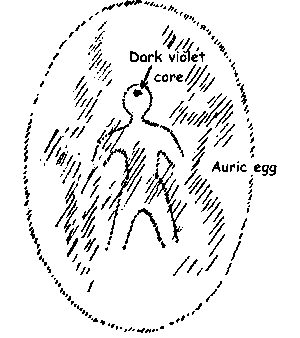
The aura (Greek: αύρα áura "breath, breeze, morning breeze"[1]; Hebrew: אוֹרָה aura; related to אוֹר or resp. aur "light") of the human being gives a picture of his supersensible members as seen by the clairvoyant. The supersensible members are the etheric body, the astral body and the I. Accordingly, one can distinguish an ether aura, an astral aura and an I-aura, whereby the astral aura is usually the most prominent. In the visual arts, the full-body aura is depicted as a mandorla or aureole, the head aura as a halo. Originally, in ancient cultures, the forms and colours of the robes were also designed as a sensually visible expression of the human aura.
The perception of the aura
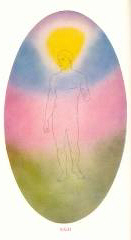

The theosophical writers Annie Besant and C. W. Leadbeater, despite all the reservations one might have against them from an anthroposophical point of view, have given essentially accurate, comprehensive and richly illustrated accounts of the human aura, which largely correspond to Rudolf Steiner's descriptions. However, one must always bear in mind that these are sensualised and thus more or less symbolic representations of supersensible experiences. The "colours" and "forms" within the aura are not experienced in the same way as their counterparts in the sensual world; they can only be described comparatively in this way. For those who know them, they are only a sign that points to the actual experience, just as, for example, the written letter A points to the audible sound A, but is otherwise quite dissimilar to it. And just as the letter A must be written in order to be there at all, so the aura must also be actively produced in the consciousness of the seer through an inner "painting seeing" as imagination, although its reality is quite independent and autonomous from this - similar to how one records what is heard visibly by means of written signs true to the word.
„It must be expressly emphasised that what is here called "colours" is not seen in the same way as physical eyes see colours, but that through spiritual perception one feels something similar to what one feels when one has a physical impression of colours. To perceive "blue" spiritually is to feel or sense something similar to what one feels when the gaze of the physical eye rests on the colour "blue". This must be taken into account by anyone who really wants to gradually ascend to spiritual perceptions. Otherwise he would expect to find only a repetition of the physical in the spiritual. This would have to distract him most bitterly.“ (Lit.:GA 10, p. 64f)
„In my "Theosophy" you will find that the spiritual is seen in the form of a kind of aura. It is described in colors. Rude people, who do not go further into the things, but write books themselves, believe that the seer describes the aura, describes it by having the opinion that there is really such a mist in front of him. What the seer has before him is a spiritual experience. When he says that the aura is blue, he says that he has a mental-spiritual experience, which is as if he were seeing blue. He describes in general everything that he experiences in the spiritual world and which is analogous to what can be experienced in the sensual world in terms of colors.“ (Lit.:GA 271, p. 185)
„One will now find that those people who can make supersensible observations describe what they see in such a way that they make use of expressions which are borrowed from sensual feelings. Thus one can find the elementary body of a being of the sensory world, or a purely elementary being, described in such a way that it is said that it reveals itself as a self-contained, variously colored light body, flashing in colors, glowing or shining, and lets one notice that this color or light appearance is its life expression. What the observer is actually talking about is absolutely invisible, and he is aware of the fact that the image of light or color has nothing else to do with what he perceives than, for example, the writing in which a fact is communicated has to do with this fact itself. Nevertheless, one has not merely expressed a supersensible in an arbitrary way through sensory perceptions; rather, during the observation one has really made the experience, which is similar to a sensory impression. This comes from the fact that in the supersensible experience the liberation from the sensual body is not perfect. The latter still lives with the elementary body and brings the supersensible experience into a sensual form. The description that is given of an elementary being is then actually held in such a way that it appears like a visionary or fantastic compilation of sensory impressions. If the description is given in such a way, then it is nevertheless the true reproduction of the experienced. Because one has looked what one describes. The mistake that can be made does not lie in the fact that one describes the picture as such. There is an error only when one takes the picture for reality, and not that to which the picture, as to the reality corresponding to it, points.“ (Lit.:GA 16, p. 32f)
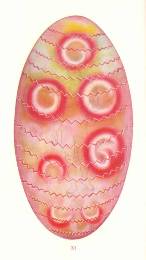

„How much of what is real is revealed to a being depends on its receptivity. Thus, man must never say that only what he can perceive is real. Many things can be real, for the perception of which he lacks the organs. - Now the soul world and the spirit world are just as real, even in a much higher sense real than the sensual world. It is true that no sensual eye can see feelings, ideas; but they are real. And as man, through his external senses, has the physical world before him as a perception, so for his spiritual organs feelings, urges, instincts, thoughts and so on become perceptions. Just as through the sensual eye, for example, spatial processes can be seen as color phenomena, so through the inner senses the aforementioned mental and spiritual phenomena can become perceptions analogous to the sensual color phenomena. However, only he who has walked on the path of knowledge to be described in the next chapter and has thus developed his inner senses can fully understand in which sense this is meant. For such a one the soul appearances become supersensibly visible in the soul world surrounding him and in the spiritual area the spiritual appearances. Feelings, which he experiences in other beings, radiate like light appearances for him from the feeling being; thoughts, to which he turns his attention, flood the spiritual space.
For him, a thought of a human being that relates to another human being is not something imperceptible, but a perceptible process. The content of a thought lives as such only in the soul of the thinker; but this content excites effects in the spirit world. These are the perceptible process for the spiritual eye. As an actual reality, the thought streams out from one human being and flows to the other. And the way in which this thought affects the other is experienced as a perceptible process in the spiritual world. Thus, for the one whose spiritual senses are developed, the physically perceptible human being is only a part of the whole human being. This physical man becomes the center of soul and spiritual outpourings. Only a hint can be given of the richly manifold world which opens up before the "seer" here. A human thought, which otherwise lives only in the thinking understanding of the listener, appears for example as a spiritually perceptible color appearance. Its color corresponds to the character of the thought. A thought arising from a sensual impulse of man has a different coloring than a thought conceived in the service of pure knowledge, noble beauty or the eternal good. In shades of red, thoughts which spring from the sensual life pervade the world of the soul. In beautiful bright yellow appears a thought through which the thinker ascends to a higher knowledge. In glorious rose-red shines a thought which comes from devoted love. And like this content of a thought, also its greater or lesser definiteness is expressed in its supersensible manifestation. The precise thought of the thinker shows itself as a structure of definite outlines; the confused idea appears as a blurred, cloudy structure.
And the soul and spirit being of man appears in this way as a supersensible part in the whole human beingness.
The color effects perceptible to the "spiritual eye", which radiate around the physical man perceived in his activity and envelop him like a cloud (approximately in egg shape), are a human aura. In different people the size of this aura is different. But one can imagine - on the average - that the whole human being appears twice as long and four times as wide as the physical one.
In the aura now the most different color tones flood. And this flooding is a true picture of the inner human life. Individual color tones are as changing as this. But certain permanent qualities: talents, habits, character traits are also expressed in permanent basic color tones.“ (Lit.:GA 9, p. 158)

„Personality is that which allows the three bodies - physical body, etheric body and astral body - to be irradiated by the I. This can also be unclear, shadowy - and if this is the case, the person concerned is a weak personality.
For the clairvoyant this is quite recognizable. He sees the person surrounded by a colored aura, in which his moods, passions, feelings, sensations are precisely expressed in color currents and color clouds. If we put ourselves in the time in which the three members of the being were only ready to receive the human I, we would also find an aura in this being which had not yet become completely human. But in it the yellow currents would be missing, in which the higher nature of man is expressed. Strong personalities have a strong yellow radiant aura. Now one can be a strong personality, but without activity, one can react inwardly strongly without being a doer. Then the aura shows a lot of yellow. But if one is a doer and the personality has an effect in the outer world, the yellow gradually changes into a radiant red. A radiant red aura is that of a doer; but it must radiate.
But there is a cliff when the personality urges to action. This is ambition, vanity. Strong natures can be particularly easily afflicted by it. The clairvoyant sees this in the aura. Without the ambition, the yellow changes abruptly into red. However, if a person is ambitious, he has a lot of orange in the aura. One must overcome this threshold to get to the objective act.
Weak personalities are those who are more focused on being given than on giving and doing. There you will see mainly blue colors, and when people are particularly comfortable, the indigo color. This refers more to the inner comfort than to the outer.
You see how the strong or weak personality is reflected in the aura of the person.“ (Lit.:GA 96, p. 322)
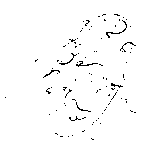
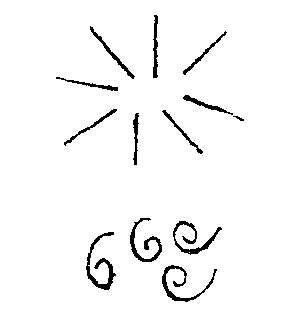
„You know that the astral body, in which the inner drives, desires and passions of man live, becomes visible to the clairvoyant as a light body. In this light body the most manifold figures and colors appear [figure on the left]. Every passion, every urge has a certain color. All this, even the basic mood is formed in this light body. If you look at the body of light of a person who is very nervous, you will see that it is completely impregnated with glittering and shining points. All this shines and disappears and plays in the most different colors.
If there is a terrible affect, you will find such rays [illustration on the right]:
A person who has a restrained resentment has figures like snakes in him.
But it is difficult to draw this, because it is continuously in motion, like lightning. So inwardly there is anger or resentment or nervousness when the soul is wriggling inwardly. What the person experiences inwardly is his state of soul. Externally, this state of soul becomes visible to the clairvoyant as a light appearance.“ (Lit.:GA 96, p. 130)
„If we look today at a person in whom there is a sharply developed faculty of judgment and combination, if we look at him clairvoyantly today, we find a strong expression and reflection of it in a green glittering and shining of the astral body, the astral aura. The power of combination shows itself in green color inclusions of the aura, especially in those who have a sharp, mathematical mind. The ancient Egyptian initiates saw the god who implanted the faculty of intelligence in man, and they pictured him and painted him green because they saw his luminous astral and etheric form shimmering green. This is still today the glittering auric color when man moves in the intelligence. And much could be studied about these connections, if people really wanted to study this wonderful realism of the Egyptian god figures. By the fact that these representations of the gods' figures are so realistic and no arbitrary ones, they worked like magic means; and the one who could see deeper would see how in the colors of these ancient figures secrets are present in a high degree. One could see deeply into the gears of the development of mankind.“ (Lit.:GA 106, p. 147f)
The aura as the "eggshell" of man
„The ordinary human being is like the chicken that would think its eggshell is the real world. If the chicken could perceive inside its eggshell, it would see it not small, but very enlarged, even as big as we see our world. Like the whole world, it would look at the contents inside the shell. Thus we see our eggshell, that is, our aura, spread out around us as the blue vault of heaven. If we break through our shell, then the sun and moon are eclipsed, the stars fall to earth - in their place the spiritual world spreads out.
People live in their eggshell - their aura. The Elohim gave us our aura, and through the Fall it has become like a shell around us, and we are inside it like the chicken in the egg. The sky and the stars are our limitation, and we have to break through them by our soul power, like the chick has to break through the shell by its own power. Then we enter a new world, just as again the chick has a new world before it when it crawls out of the egg. And since all people actually have the same eggshell around them, also an astronomy could develop, as we have it, which lets the heavenly bodies move on the firmament.
The eggshell is this: Ex Deo nascimur. So that we can break through it and also take something with us into the spiritual world, we must bring with us that which penetrates into our shell from the outer world - that is, from the spiritual world - which is the common thing; that is the Christ. That is why we say: In Christo morimur and hope that when we have broken through the shells with Christ's help, we will be resurrected again: Per Spiritum Sanctum reviviscimus.“ (Lit.:GA 266c, p. 187)
Aura and sense world
The sense qualities perceived by the senses are expressions of the higher worlds. The perception of the aura arises from exactly the same causes, only the impressions are not perceived sensually, but directly psychically.
Just the most imperfect senses, namely the sense of taste and smell, reach highest up into the spiritual world, but express it only very imperfectly. In the colors perceived by the sense of sight, the higher astral world is revealed, while the lower astral world, which already overlaps with the etheric world (→ Kamaloka), makes itself known through the experiences of the sense of warmth. The most perfect sense, the sense of hearing, on the other hand, has already arrived completely in the physical world. This is even more true for the sense of words.
The perfection of the sense organs is connected with their age of development. With the sense of hearing man already entered the old Saturnian development, during which then also the sense of warmth was formed. On the Old Sun man acquired the sense of sight, on the Old Moon the sense of taste and the sense of smell developed only during the actual development of the Earth (Lit.:GA 96, p. 125ff).
Literature
- Annie Besant, C. W. Leadbeater: Thought Forms
- C. W. Leadbeater: Man Visible and Invisible, The Theosophical Publishing House, London 1902
- Walter Benjamin: Das Kunstwerk im Zeitalter seiner technischen Reproduzierbarkeit, Suhrkamp Verlag, Frankfurt am Main 1991, ISBN 3-518-28531-9
- Rudolf Steiner: Theosophie. Einführung in übersinnliche Welterkenntnis und Menschenbestimmung, GA 9 (1904), Kapitel VI. Von den Gedankenformen und der menschlichen Aura) English: rsarchive.org German: pdf pdf(2) html mobi epub archive.org
- Rudolf Steiner: Wie erlangt man Erkenntnisse der höheren Welten?, GA 10 (1993), ISBN 3-7274-0100-1 English: rsarchive.org German: pdf pdf(2) html mobi epub archive.org
- Rudolf Steiner: Die geistige Führung des Menschen und der Menschheit, GA 15 (1987), ISBN 3-7274-0150-8 English: rsarchive.org German: pdf pdf(2) html mobi epub archive.org
- Rudolf Steiner: Ein Weg zur Selbsterkenntnis des Menschen, GA 16 (2004), ISBN 3-7274-0160-5 English: rsarchive.org German: pdf pdf(2) html mobi epub archive.org
- Rudolf Steiner: Ursprung und Ziel des Menschen, GA 53 (1981), ISBN 3-7274-0532-5 English: rsarchive.org German: pdf pdf(2) html mobi epub archive.org
- Rudolf Steiner: Fachwissenschaften und Anthroposophie, GA 73a (2005), ISBN 3-7274-0735-2 English: rsarchive.org German: pdf pdf(2) html mobi epub archive.org
- Rudolf Steiner: Über die astrale Welt und das Devachan, GA 88 (1999), ISBN 3-7274-0880-4 English: rsarchive.org German: pdf pdf(2) html mobi epub archive.org
- Rudolf Steiner: Vor dem Tore der Theosophie, GA 95 (1990), ISBN 3-7274-0952-5 English: rsarchive.org German: pdf pdf(2) html mobi epub archive.org
- Rudolf Steiner: Ursprungsimpulse der Geisteswissenschaft, GA 96 (1989), Berlin, Zwanzig Vorträge vom 29. Januar 1906 bis 12. Juni 1907 English: rsarchive.org German: pdf pdf(2) html mobi epub archive.org
- Rudolf Steiner: Ägyptische Mythen und Mysterien, GA 106 (1992), ISBN 3-7274-1060-4 English: rsarchive.org German: pdf pdf(2) html mobi epub archive.org
- Rudolf Steiner: Das Prinzip der spirituellen Ökonomie im Zusammenhang mit Wiederverkörperungsfragen, GA 109 (2000), ISBN 3-7274-1090-6 English: rsarchive.org German: pdf pdf(2) html mobi epub archive.org
- Rudolf Steiner: Makrokosmos und Mikrokosmos, GA 119 (1988), ISBN 3-7274-1192-9 English: rsarchive.org German: pdf pdf(2) html mobi epub archive.org
- Rudolf Steiner: Die Geheimnisse der biblischen Schöpfungsgeschichte, GA 122 (1984), ISBN 3-7274-1220-8 English: rsarchive.org German: pdf pdf(2) html mobi epub archive.org
- Rudolf Steiner: Weltenwunder, Seelenprüfungen und Geistesoffenbarungen, GA 129 (1977) English: rsarchive.org German: pdf pdf(2) html mobi epub archive.org
- Rudolf Steiner: Das Leben zwischen dem Tode und der neuen Geburt im Verhältnis zu den kosmischen Tatsachen, GA 141 (1997), ISBN 3-7274-1410-3 English: rsarchive.org German: pdf pdf(2) html mobi epub archive.org
- Rudolf Steiner: Die geistigen Hintergründe des Ersten Weltkrieges, GA 174b (1994), ISBN 3-7274-1742-0 English: rsarchive.org German: pdf pdf(2) html mobi epub archive.org
- Rudolf Steiner: Erdensterben und Weltenleben. Anthroposophische Lebensgaben. Bewußtseins-Notwendigkeiten für Gegenwart und Zukunft, GA 181 (1991), ISBN 3-7274-1810-9 English: rsarchive.org German: pdf pdf(2) html mobi epub archive.org
- Rudolf Steiner: Aus den Inhalten der esoterischen Stunden, Band II: 1910 – 1912, GA 266/2 (1996), ISBN 3-7274-2662-4 English: rsarchive.org German: pdf pdf(2) html mobi epub archive.org
- Rudolf Steiner: Aus den Inhalten der esoterischen Stunden, Band III: 1913 und 1914; 1920 – 1923, GA 266/3 (1998), ISBN 3-7274-2663-2 English: rsarchive.org German: pdf pdf(2) html mobi epub archive.org
- Rudolf Steiner: Kunst und Kunsterkenntnis, GA 271 (1985), ISBN 3-7274-2712-4 English: rsarchive.org German: pdf pdf(2) html mobi epub archive.org
- Rudolf Steiner: Geisteswissenschaftliche Erläuterungen zu Goethes «Faust», Band I: Faust, der strebende Mensch , GA 272 (1981), ISBN 3-7274-2720-5 English: rsarchive.org German: pdf pdf(2) html mobi epub archive.org
- Rudolf Steiner: Farbenerkenntnis, GA 291a (1990), ISBN 3-7274-2915-1 English: rsarchive.org German: pdf pdf(2) html mobi epub archive.org
- Rudolf Steiner: Die Aura des Menschen. In: Diane von Weltzien (Hrsg): Das große Praxisbuch der Aura- und Chakra-Arbeit, Goldmann TB, München 1993, S. 109 - 123
 |
References to the work of Rudolf Steiner follow Rudolf Steiner's Collected Works (CW or GA), Rudolf Steiner Verlag, Dornach/Switzerland, unless otherwise stated.
Email: verlag@steinerverlag.com URL: www.steinerverlag.com. Index to the Complete Works of Rudolf Steiner - Aelzina Books A complete list by Volume Number and a full list of known English translations you may also find at Rudolf Steiner's Collected Works Rudolf Steiner Archive - The largest online collection of Rudolf Steiner's books, lectures and articles in English. Rudolf Steiner Audio - Recorded and Read by Dale Brunsvold steinerbooks.org - Anthroposophic Press Inc. (USA) Rudolf Steiner Handbook - Christian Karl's proven standard work for orientation in Rudolf Steiner's Collected Works for free download as PDF. |
References
- ↑ In Greek mythology, aura is the goddess of the morning breeze.
- ↑ Quelle: https://www.gutenberg.org/files/16269/16269-h/16269-h.htm
